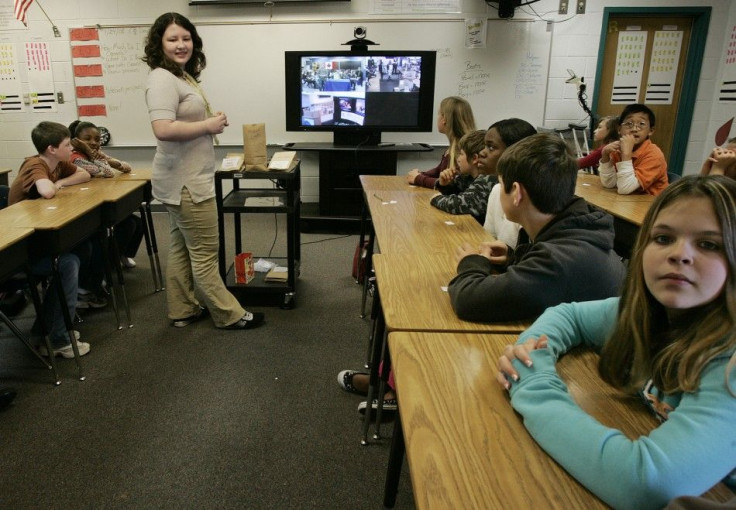It ‘Takes A Village’ To Fix Our Education System
Opinion

Now that we are entering another school year, it is hard to believe that our modern school system is less than 100 years old. In 1900, out of 45 states, 34 had compulsory schooling laws for elementary education; only four were in the south. As a result, in 1910, 72 percent of American children attended elementary school, half of which attended in one-room schools. Finally by 1918, every state required students to complete elementary school.
In the 1880s, American high schools were preparatory academies for colleges, but by 1910 they had been transformed into what are now the core elements for the high schools system. In 1890, there were 200,000 high school students. This grew to 1 million by 1910 and 2 million by 1920. Seven percent of kids, aged 14 to 17, were enrolled in high school in 1890, rising to 32 percent in 1920. In 1910, 9 percent of Americans had high school diplomas, growing to 40 percent in 1935 and 50 percent by 1940. Today, 88 percent of all Americans aged 20 and older have graduated from high school.
Obviously, our public education system is so much better than it was 100 years ago. But are our schools any better than they were last year, or five years ago, or even 10 years ago? In the most recent decade the "No Child Left Behind" act was passed by a bipartisan coalition in Congress and signed by President George W. Bush on Jan. 8, 2002 -- yes, our two parties running government can agree on crucial issues every so often -- and marked a new direction in education.
In exchange for more federal aid, the states were required to measure progress and punish schools not meeting the goals measured by standardized state exams. According to Education Week, 38 percent of schools were failing to make adequate yearly progress in 2010, up from 29 percent in 2006. And now, right before our new school year begins, six more states (including my home state of Arizona) and the District of Columbia were the latest to be approved for waivers to this law.
This brings the total to 33 states that have been granted waivers to get out of the tough test requirements in order to get more federal funds. In 2011, $14.5 billion was spent by the federal government on this program every educator must live and breathe.
According to the New America Foundation, America spent over $500 billion a year on public elementary and secondary education. This averages to $10,591 per student. The federal government picks up $40 billion of this, or 8 percent -- less than 3 percent of our total federal budget. This means 92 percent of public schools are funded by the states and local government. New Jersey spent $16,271 per student while Utah spent $6,356. Wealthier states like those in the northeast have more funding available than states with limited resources. Is this fair for the children of the United States?
Not everyone has kids or grandchildren in school, so many of us tend to not pay much attention to the status of education. But even if you do support your local schools, there are so many other schools we can all help that are struggling because they just don't have adequate funding. Take a look at Donors Choose, an online charity that connects donors to classrooms in need. Here public school teachers from every corner of America post needed projects and donors can give any amount to help these classroom projects succeed. Or go to the DollarDays August promotion on Facebook, which is now taking nominations for schools to share in $5,000 of merchandise to help their classrooms.
To think that the federal government spends less than 3 percent of our budget to educate the upcoming generation to be smarter and better than us is an embarrassment for the American way of life. To realize that more schools today are failing to make progress than schools just five years ago is appalling.
If we could just educate the next generation on how to eliminate poverty or war, we could then use that savings from our federal budget to fund more education for the following generations. This cannot be the start of another school year where we fall behind the year before. It looks like the only way we can avoid this American tragedy is to get involved.
Volunteer at your local schools, so schools can move their paid staff to help the students most in need. Give your time and your money to help your local PTA to fund the extracurricular activities that may have been lost over the years. And as important, lobby your local, state and federal government to increase the funding needed to make this generation of kids better than the last generation. With the major election cycle coming up this November, this is the time to elect representatives who know a better education for all is tied to the future of America. Help our kids now so they can help us later.
Marc Joseph is the author of "The Secrets of Retailing, Or: How to Beat Wal-Mart!" and the CEO/President and founder of DollarDays International Inc.
© Copyright IBTimes 2024. All rights reserved.





















